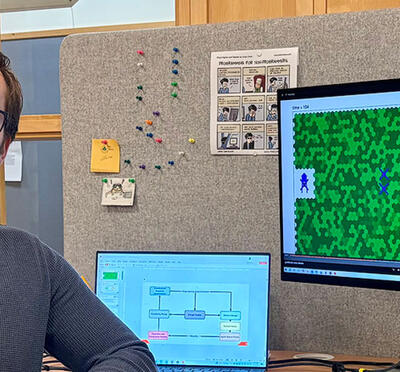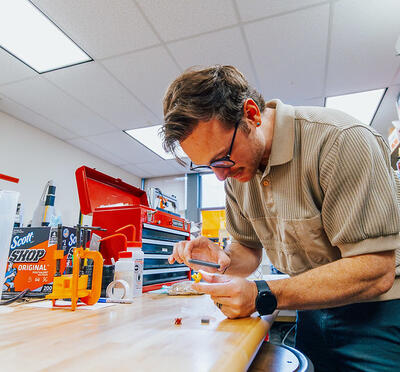Since she began studying materials science as a graduate student at Oregon State University in 2015, Kenya Hazell, a GEM Fellow and recent environmental technology researcher and development intern at Corning, has sought to discover ways to sustainably create and apply polymer composites — unique materials with synergistic properties, formed by combining reinforcement materials with polymer matrices.
“Everything’s a polymer, even DNA,” Hazell said. “It’s hard to narrow down the field, because there are so many uses for composites. They’re in a ton of products you need for your everyday life, like your fridge, your desk, your car.”
Hazell was first turned on to the seemingly endless possibilities of polymer composites during a trio of internships — Garlock Sealing Technologies, UTC Aerospace Systems, and Clausthal University of Technology, in Germany — near the end of her time at the Rochester Institute of Technology, where she earned a bachelor’s degree in chemical engineering.
“After those internships, I decided I wanted to delve more into that realm and go to grad school,” Hazell said. “I chose Oregon State, because there are so many possibilities, in terms of research geared toward sustainable engineering.”

As a master’s student at Oregon State, Hazell worked on projects involving wood composites and plant fibers, including an exploration of how hemp fibers can be modified to yield greater thermal sustainability during the manufacturing process.
“Can I make a more sustainable product? Can the manufacturing process be more sustainable? And an end goal is: How can we recycle this?” Hazell wondered.
Now, Hazell’s doctoral research, which she conducts in the lab of Vincent Remcho, professor of chemistry, focuses on electrospinning as a way to produce nanoscale fibers for thermal applications. She primarily works with structural composites similar to those used in exteriors of products such as cars and aircraft.
Complementing Hazell’s research are her recent internships with Georgia-Pacific Chemicals in 2020 and with Corning in the summer of 2021. For her research and development role at Georgia-Pacific, which she began shortly before the pandemic, she helped design experiments to study the properties of resin as a composite material and assisted in studies of wood composites. Beyond her own research, Hazell liked that chemists and chemical engineers working in different labs were eager to tell her about their projects.
“If I didn’t have anything to do, I just walked over to another lab, and if they weren’t too busy, they would tell me everything. I learned a lot about how an R&D lab works,” she said.
A year later, at Corning’s headquarters in New York, Hazell performed research and development work in the company’s environmental technology unit, where she examined methods to characterize the real-life properties of a gel material.
“That gave me a view of what a company invested more heavily in their research sector looks like,” Hazell said.
Hazell’s internship at Corning was connected to her GEM Fellowship, through which Oregon State and Corning provide funding for her Ph.D. studies. In addition to financial support, GEM offers professional networking, conferences, and career development, and many Fellows go on to secure jobs with their internship organizations.
As for her postdoctoral future, Hazell looks forward to making an impact on the materials science industry’s sustainability practices.
“Not everyone wants to be forced to choose a material that’s not environmentally friendly,” Hazell said. “So, how can we make a product that’s competitive to this nonrenewable product? How can we provide more ways for people to make environmentally conscious decisions? I’m creating new options for people.”



